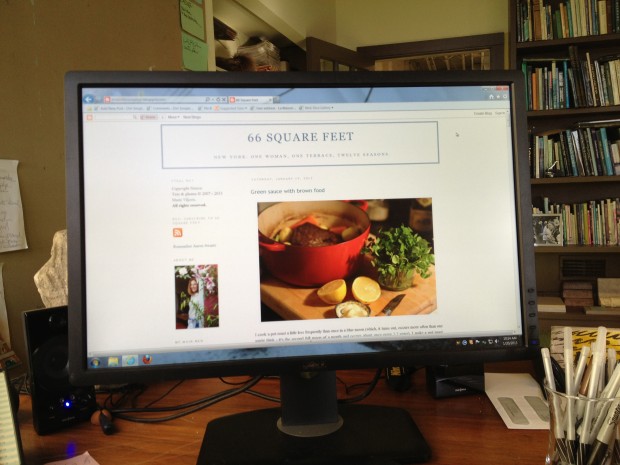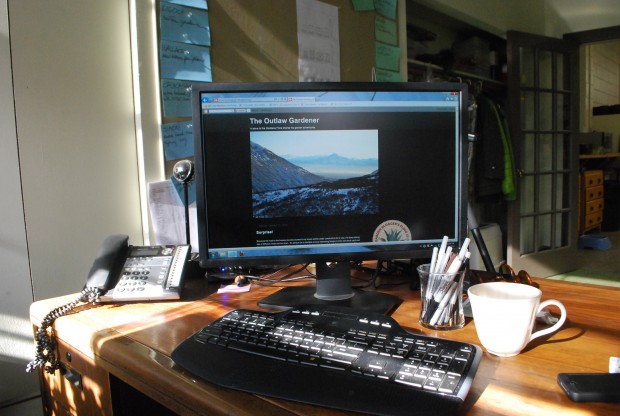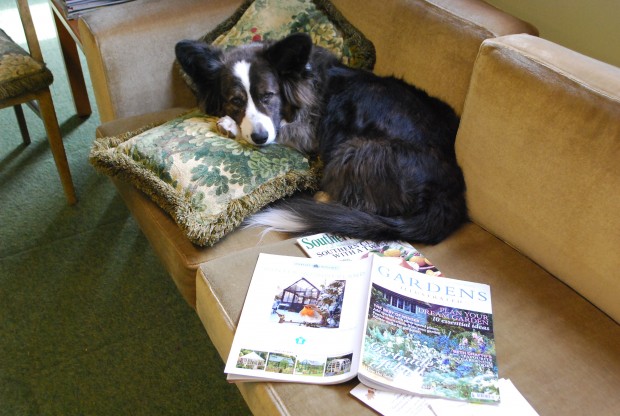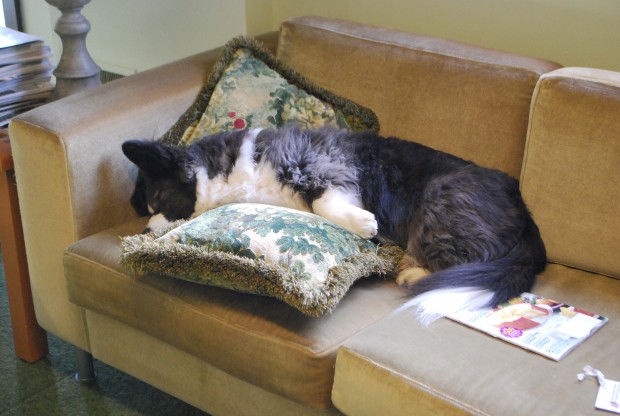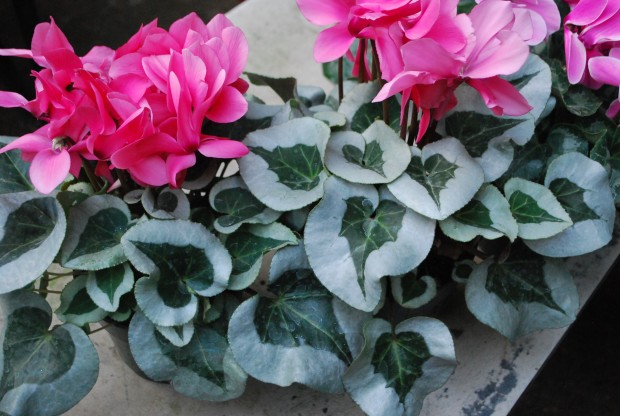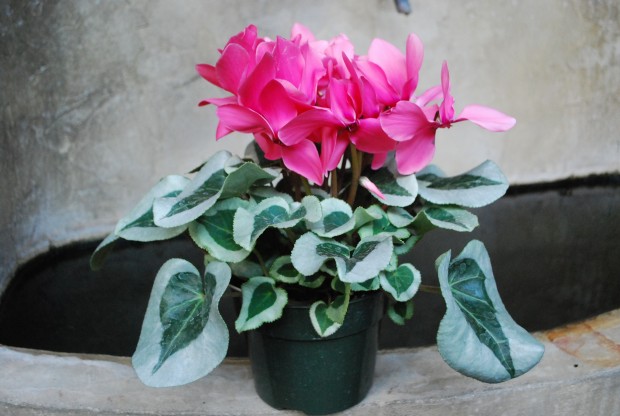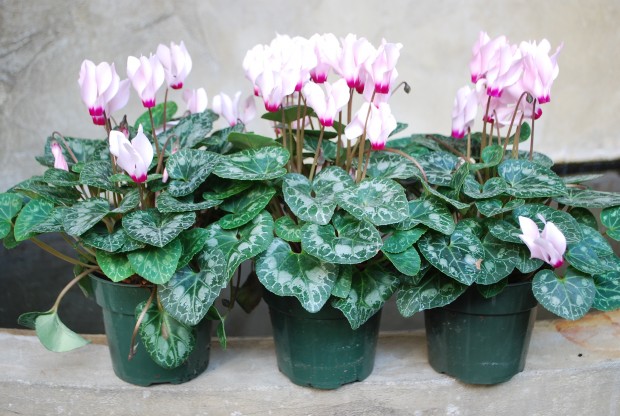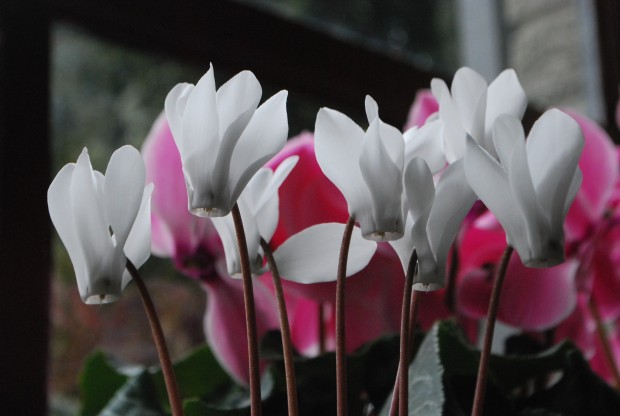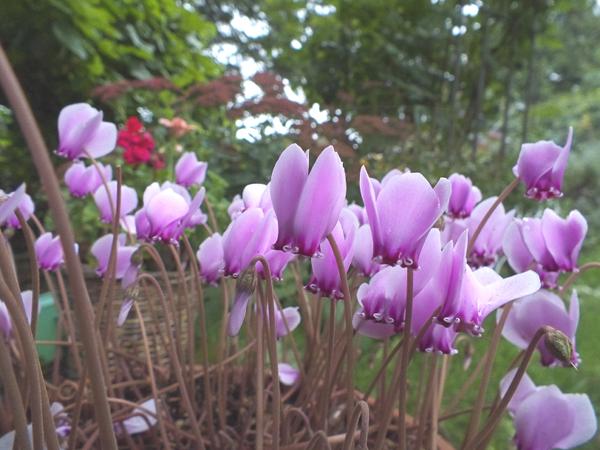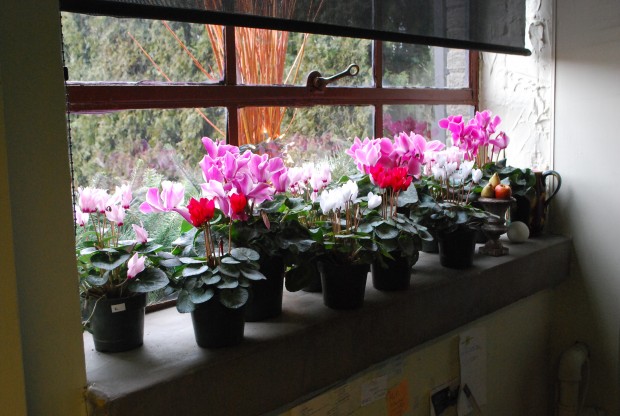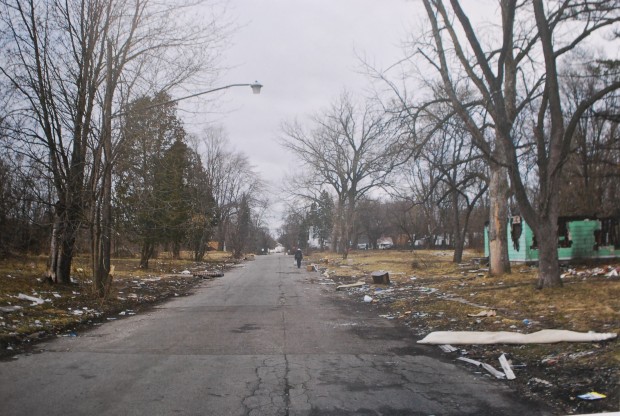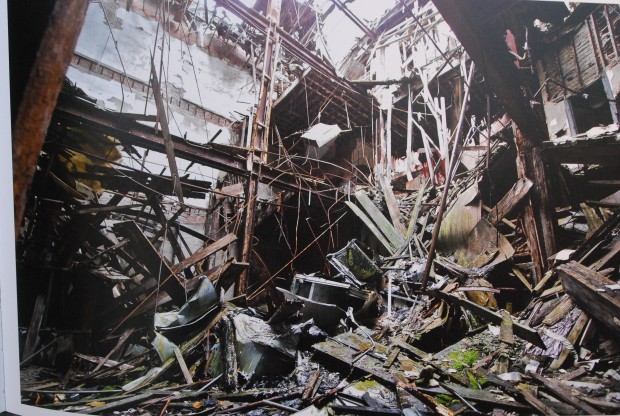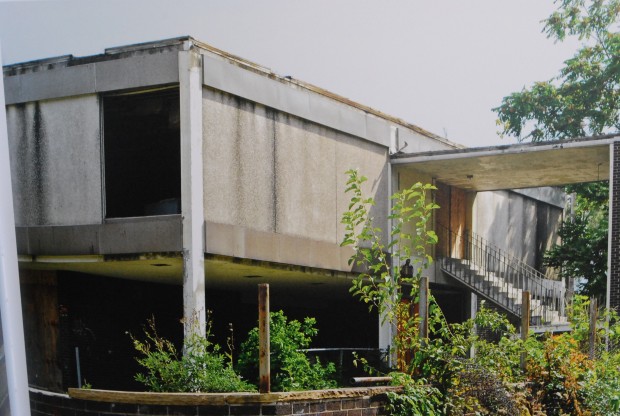
I bought this poster of an 1805 pen/ink/watercolor and graphite work by William Blake at the Metropolitan Museum of Art in New York City, in 1968. I was 18, and in New York to see the Broadway production of ”Hair”-if you don’t know what that was, you’re just too young. The poster has been in my possession for 42 years; I look at it more often than you might think. Why? I am inspired by it. “The Great Red Dragon and the Woman Clothed with the Sun” has stormy weather, the interaction of opposing forces, a winged and horned creature hovering, the sun woman with the wings of an angel perched on a craggy outcrop no bigger than she-a landscape. The color relationships are exquisite. Some days I think it is about good and evil. Other days I think it is about the beauty of tension, like that moment just before a drop of water falls from a branch after a rain. Other days yet I think it is about the power of a relationship. The similar shape and expression of the four hands dramatically encloses the space between them. The composition is astonishing; I never tire of it. Did I know I would be a gardenmaker at 18? Absolutely not. But I did have an instinct to collect images that spoke to me like this one does. The instinct to be inspired is a strong one.

Inspiration is any image, thought, exchange or lightening bolt that has the power to move me to invent. That said, I have no need to immediately understand why images move me-I just need to collect them. The reason I chose to select it will make itself known, sooner or later. This is not an unusual activity-I have lots of clients who rip pages from magazines, and show me pictures of family events-something in each image moves them. Brides in particular are very good at folders stuffed with images of this bouquet and that cake. The words that adequately explain being moved to invent can be complicated. An image that expresses the entire idea in a stirring way-an inspiration. All of the pictures in this essay-images that have inspired me. The above pictured landscape from a magazine is natural, graceful and subtle. A path barely visible moves the eye from the foreground to the background-to that place where the almost horizontal line of sunny grass directs your eye to the break in the trees. Through the break, a stout tree trunk which is the furthest object from my eye. The landscape is composed to encourage you to go to that stout tree trunk; do you see it? This image inspired me to design in a way that strongly describes the depth of the space.
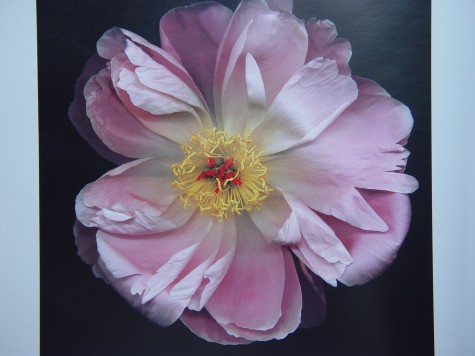
People cherish different things-many of which have roots in their own particular history or memory. I believe this photograph of a peony was taken by my Mom-but I could be wrong. Some images I have had for so many years I no longer remember their provenance. The important thing is that I associate the beauty and the amazing structure of flowers with her. We had quite the long relationship. We had a precious relationship over flowers and gardens. Keeping that alive is no small part of what inspires me to work.
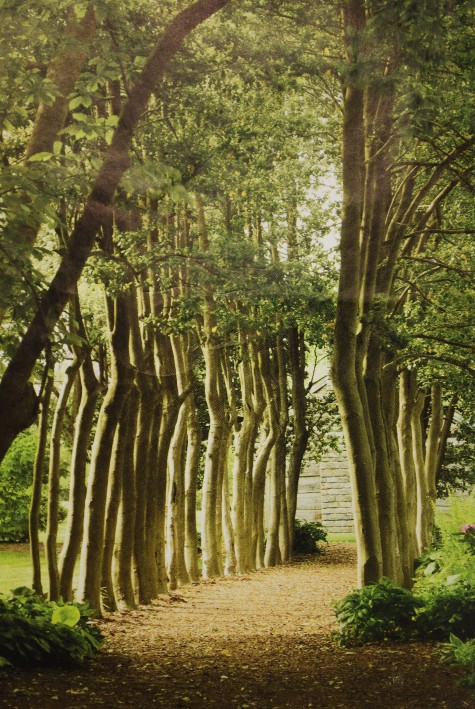
What inspires me in this picture is the story behind it. Yew Dell Gardens is a botanical garden just outside of Louisville Kentucky. Theodore Klein and his wife had a commercial nursery on these 33 acres, growing countless plants here until his death in 1998. The property was purchased, and reinvented as a botanic garden. The above pictured allee is in fact a pair of adjacent nursery rows of American holly, now very old, and very close together. No book on proper horticultural practices would condone planting large trees or shrubs this close together-but here is the result of what would be considered poor spacing. How these nursery rows inadvertently became a beautiful landscape feature inspires me. I have been waiting since the first day I saw this picture for a client to come along that would be as excited reinterpeting this idea as I am. I feel sure the time will come.
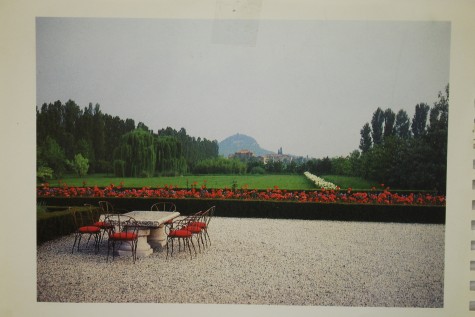
This is an image from an old garden journal which now survives as a collection of images I treasure. The landscape is simple, striking, and very spatially composed. Elements both contemporary and traditional interact in so many ways. The abstract relationships of the shapes and colors- spare but lively. The narrative-a table and chairs on a terrace with a mountain in the background-very traditional. The long row of whatever is blooming white leads the eye from the foreground, to the background. The successful integration of the abstract composition with the traditional story-this inspires me.

These trees with whitewashed trunks in a garden in the south of France make a distinct reference to agriculture. Fruit trees would sometimes have their trunks whitewashed with a kaolin compound, to deter insects. Kaolin, the same clay which is the basis for face powder, is a benign and useful compound. The visual appearance-gorgeous. The gardens of others inspire me. I encourage clients to cut and collect any image that gets their attention-even if it is not clear what attracts them. Sooner or later some thread that connects all of them will become clear. The relationship of agriculture to landscape design-this interests and inspires me.
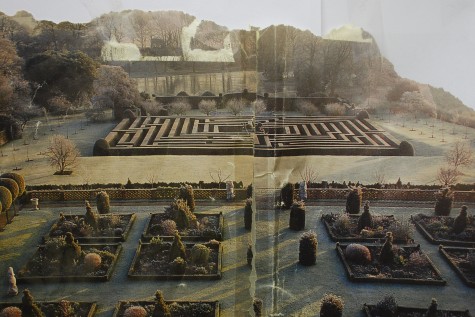
The maze at Hatfield-pictured in the background of this photo- is one of my favorite gardens. It would be enough, the beautiful maze so beautifully maintained, but what truly inspires me about it is the grade. The maze is built in a subtly sunken space. To my eye, that simple grade change is what transforms this garden from beautiful, to incredibly beautiful. This designer-truly inspired. Every time I see this image, I am struck by how a single simple and sweeping design move can utterly transform a space. Any space can be transformed -I am inspired by that thought, too.

How I see this combination of poppies and grass echo repeats the feelings I have about the Hatfield maze. Beautifully unexpected? Unexpectedly beautiful? This is always on my mind. This unexpected pairing of plants is a design move that delights the eye. The nature of each plant gives life and emphasis to the other-in color, texture and pattern. This planting, for that short time while the poppies are in bloom, is a celebration of the ephemeral beauty of nature.
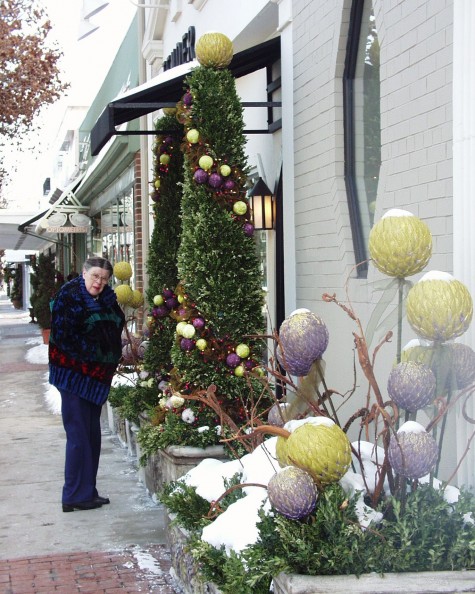
Mom Julia never tired of seeing my projects, nor did she ever stop encouraging me to be the best I could be. Her accomplishments as a scientist, teacher and photographer inspired me to be so bold as to try things, and not be afraid to redo what didn’t work out. Her image I keep in my heart, not in a folder. I keep her memory close by. But the idea is the same. There are images, relationships, memories and experiences that inspire. Anything that inspires invention-treasure it. Treasure them.
The first draft of this essay I wrote in 2010. I was inspired to rewrite it for this occasion-the January post for the Garden Designers Roundtable. Every one of them has inspired me on one occasion or another. On the strength of this, I would invite you to read what they have to say about inspiration.
Susan Cohan : Miss Rumphius’ Rules : Chatham, NJ
Scott Hokunson : Blue Heron Landscapes : Granby, CT
Lesley Hegarty & Robert Webber : Hegarty Webber Partnership : Bristol, UK
Jocelyn Chilvers : The Art Garden : Denver, CO
Jenny Peterson : J Petersen Garden Design : Austin, TX

